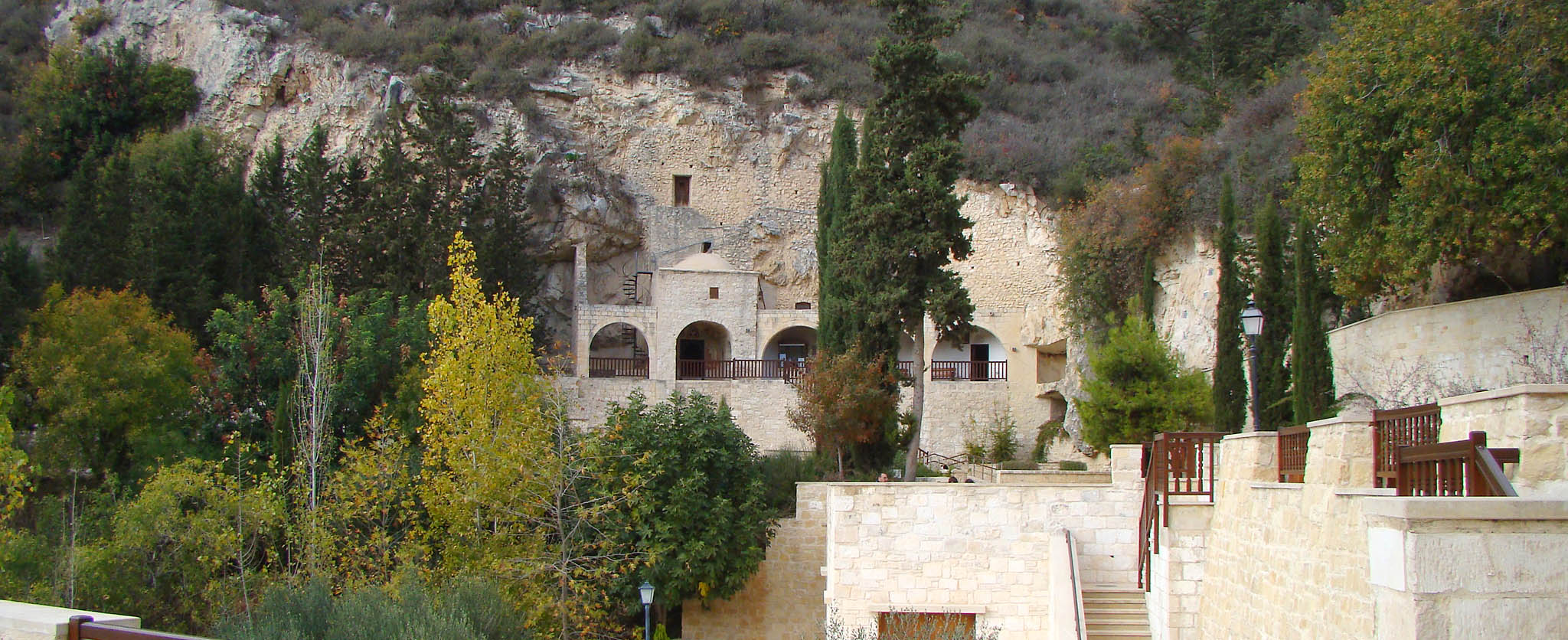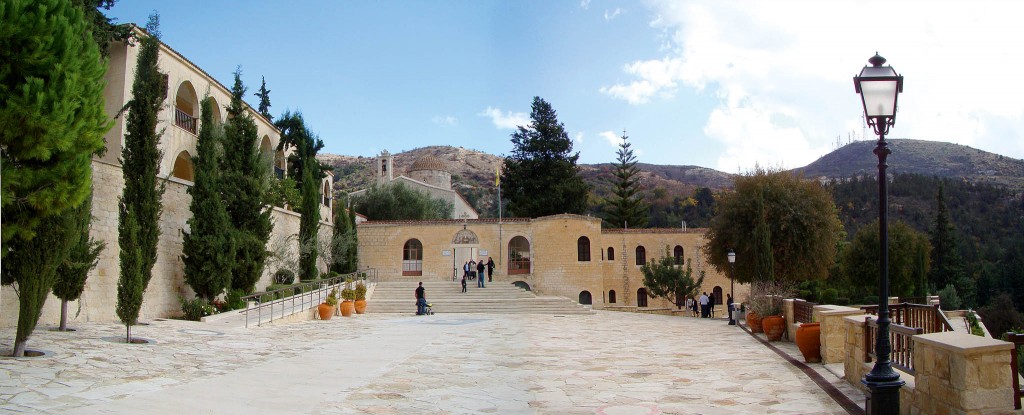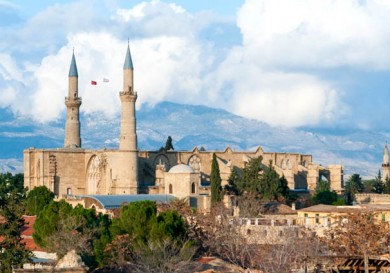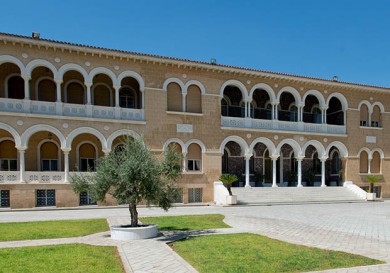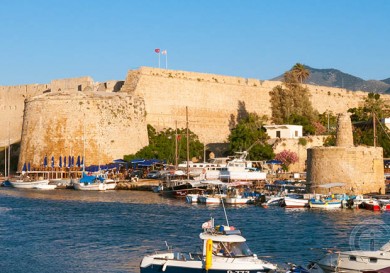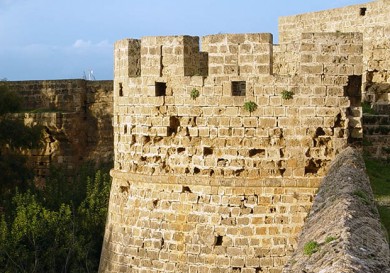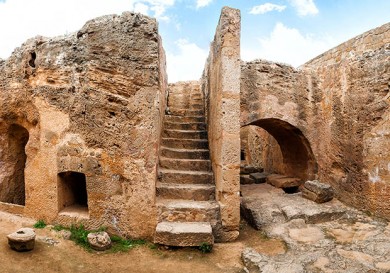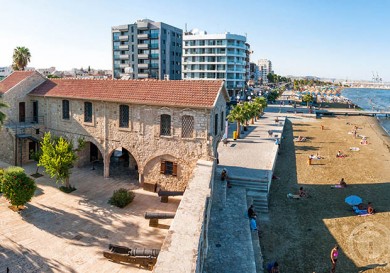A Great Christian Shrine close to Paphos
“Let’s go to Neophytes,” Pаphos residents planning a trip to the mountains to visit the ancient monastery on a beautiful Sunday, often say so as if they are visiting good friends. This is partially so – God thinks everyone is alive and the souls of saints accept with pleasure everyone who comes to them with peace and prayer.
There are always many people in the monastery of Saint Neophytes – Cypriots come here with large families, there are many young people, the woman wearing head scarves – a distinguishing feature of pilgrims from Russia.
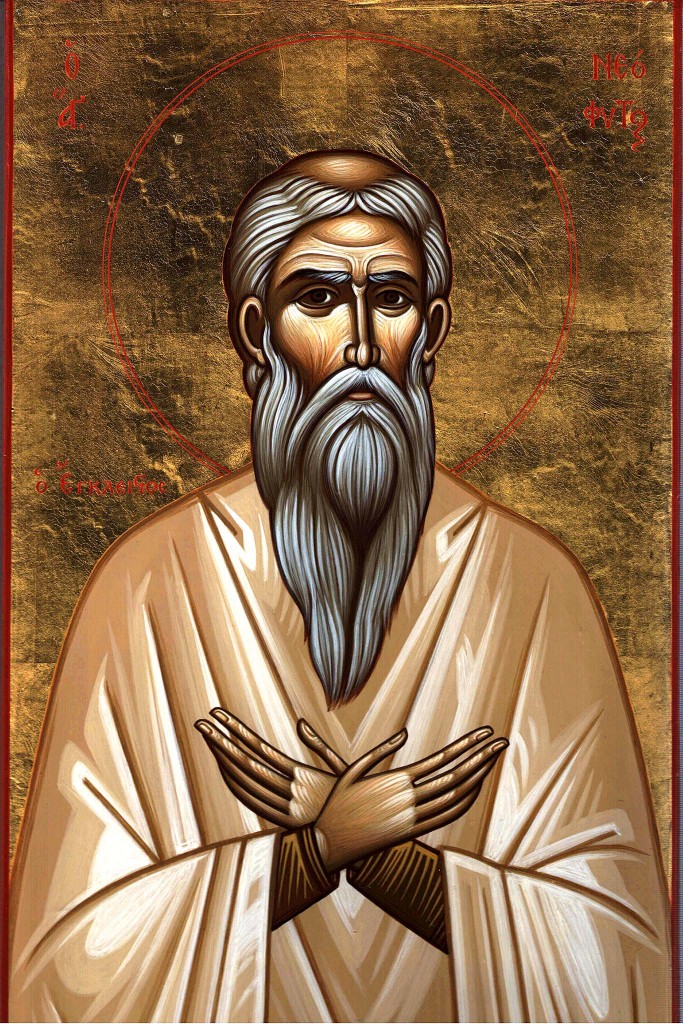 The way to the Monastery
The way to the Monastery
It is very easy to get to the monastery. Start on the road leading from Paphos to Polis and after a few kilometres from the city you will see a ‘Agios Neofytos 4 km’ sign. Turn left and pass the popular village of Tala, where many Russian families live.
There is a wonderful bird’s eye view of the sea from here, and you can but envy the owners of the local villas perched on the terraces of the steep mountainous slopes.
The road winds higher and soon meets a large parking lot hidden beneath coniferous trees. Everything is very ordered here, with parking spaces marked out and coloured signs to help you find your way.
We are rising higher, aiming for a cave in the vertical mountain slope, which the saint chose for its inconspicuousness which the monk used to his advantage.
History
Neophytes in Greek literally means “youngster,” a recent convert, someone who has believed recently. Saint Neophytes was born in 1134 to a large and poor peasant family, who lived in the village of Lefkara.
When the son was eighteen years old the parents decided to get him married, but the youth wished to devote himself to God and become a monk. Neophytes quietly left his home. The young enthusiast had to overcome many obstacles and was arrested as an escapee in the port of the Cypriot capital of Paphos (Biblical city of Path).
Neophytes dreamt of acceptance into one of the religious communities in Minor Asia but was unable to accomplish this. Upon request of the people of faith, the young man was released, and Neophytes, who had lost all his money, found shelter not far from the city, in the mountains. It was a small cave, where we are heading.
The Room of the saint Neophytes
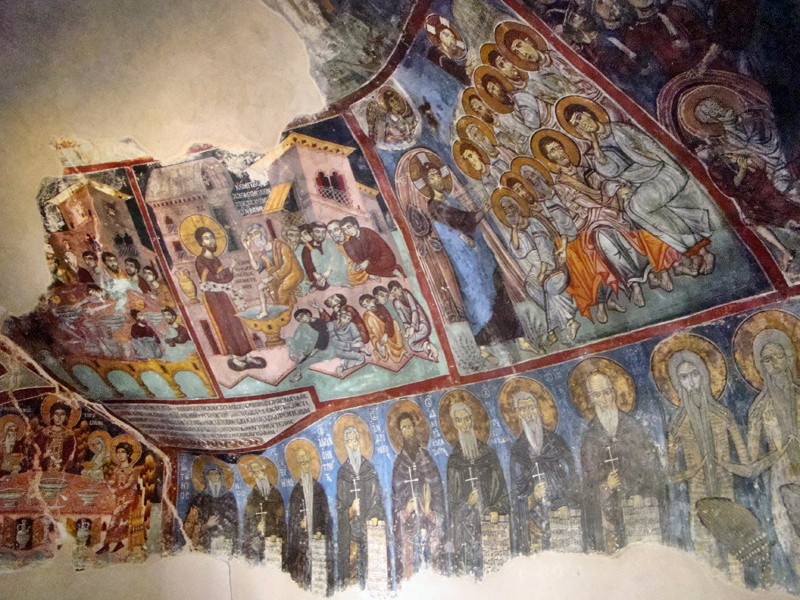 We are passing the gates, past the normally empty reception stand and walk past the main buildings of the monastery, which were built later.
We are passing the gates, past the normally empty reception stand and walk past the main buildings of the monastery, which were built later.
The caves appear ahead of us – it was here the young enthusiast struggled for many years. We buy tickets from an elderly Cypriot sitting in a booth. We should keep them as we will use the same tickets to enter the monastery museum.
We start the tour with the first cave, in which a church was established. The church was decorated with frescos in 1183, but the original images haven’t survived.
The frescos, which decorate the church today, were made after 1214. Some of them date back to 1503. They include scenes of the Passions of Our Lord, which start from the south-west corner in the upper part of the wall and stretch along all the western and southern side – The Last Supper, Washing of the Feet, Gethsemane Prayer, Judas’ Betrayal, Christ in Front of Pilate, The Road to the Calvary, Crucifixion, Descent from the Cross.
Further, through the altar of the church, we go to the room of the saint – there is a bed and a table here, all hollowed out in stone. Ancient stalls.
An exit to the street. You have to duck as the doorway is no higher than a metre and a half. A stunning view!
The saint lived in his stone room in full seclusion, towering above the world by the force of his prayer and the value of this incredible reclusive accomplishment for more than 10 years. The growth of the monastery began in 1170 when Saint Neophytes was ordained as a priest, and on request from an acting bishop took care of a pupil. Pupils later became numerous.
Saint Neophytes died in 1219.
The Monastery
We leave the cell and go back to the main monastery complex. There is a church here, monks’ cells and the museum.
The main church of the monastery was built as early as the start of the 16th cеntury. The church is devoted to the Most Holy Mother of God, which set the main theme of the murals. Soon after construction the whole church was decorated with frescoes, but only a small part has survived.
 The earthquake of 1577 is to blame, аs well as the period of the Turkish reign.
The earthquake of 1577 is to blame, аs well as the period of the Turkish reign.
Soon after Cyprus was conquered by the Turks in 1585, the monastery was sold, аnd the monks evicted. The convent was resurrected under hegumen Afanasy, who became father superior of the monastery in 1746.
A very important event also took place then – invention of the relics of Saint Neophytes. The relics were moved to the main church of the convent, where they still stay. Anyone can kiss them with faith and prayer.
We leave the church and enter a cosy monastery yard. You can sit down on a bench and enjoy the peace and quiet.
The Museum
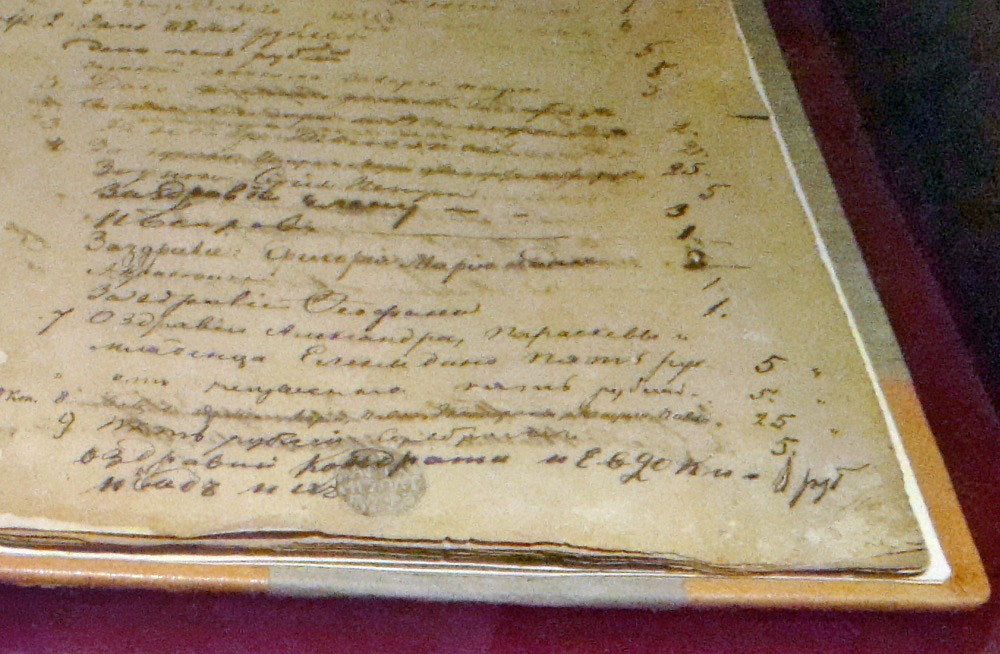 A staircase near the eastern wing of the monastery leads us down, and we enter the museum.
A staircase near the eastern wing of the monastery leads us down, and we enter the museum.
All exhibits are supplied with plates: who the icon depicts and the approximate date of painting. There are ancient icons here dating back to the 12th cеntury.
The exposition presents several Gospels, аs well as fragments of manuscripts dating to the 12-13th cеnturies.
The oldest manuscript in the exposition is part of a papyrus measuring 15х13 sm, and dates back to the 6th century.
A book where the names of benefactors were registered is worth special attention. There are a lot of Russian names here – pilgrims from Russia were welcome guests and left significant sums of money as a gift to the monastery.
Now we get acquainted with the church items and canonical dress.
The last hall of the museum presents pottery dating to the 9th – 5th centuries BC. Touching such antiquity takes your breath away.
You remember again that you are at “the centre of earth,” a place where the most important trade and transportation routes of the old world have crossed since time immemorial.




